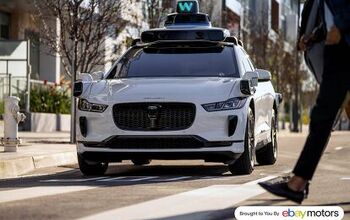The Cost Of Additional Porsche (Li-ion) Lightness: $132/lb.

Never one to shy away from expensive options, Porsche has announced that beginning in January 2010, a lithium-ion starter battery will be optional in the 911 GT3, GT 3 RS, and Boxster Spyder. Porsche is the first automaker to offer a li-ion SLI (starting, lighting ignition) battery, and given its cost, €1,904 (US$2,900), it may stay that way for a while. The new pack weighs 6 kg (13 lb), which is 10 kg or 22 (lb) lighter than a conventional 60 Ah lead battery. That works out to $132 per pound saved, based on European pricing. US pricing has not yet been announced. That sounds like a bargain compared to some of Porsche’s other pricing shenanigans. Ask the fellas in the paint booth to leave off the masking tape on a certain number of exterior and interior pieces to make them body colored, and they’ll ask you a mighty $13,545 for their (non)effort. Only a company that has the cojones to do that would to try to take over VW. I digress. More battery lightness after the jump:
Green Car Congress offers these additional details:
The 12.8V, 18 Ah lithium iron-phosphate pack from Gaia is delivered as a separate unit together with the car and may subsequently be fitted as an alternative to the regular, conventional starter battery. The cars are delivered with both batteries; while the lightweight battery offers a very high standard of everyday driving qualities, Porsche says, its starting capacity is limited at temperatures below 0 °C (32 °F) due to its specific features.
So actually, your Porsche as delivered with both batteries will be 13 pounds heavier! Ok, I get it, you pop it in on warm days when you’re heading for the track. A cheaper option might be to pump 3.5 fewer gallons of gas. Or clean out the glove box. Or start going to the gym more often.
With its nominal capacity of 18 Ah, the lithium-ion battery, through its specific features, offers a level of practical output and performance not only comparable to that of a 60 Ah lead battery, but better in many cases, Porsche says.
On a conventional car battery only about 30% of the total capacity is actually available for practical use due to the configuration of the system, while this restriction does not apply to the lithium-ion battery. Delivery of power by the lithium-ion battery throughout its useful charge range is likewise significantly better, providing its full power, for example, when starting the engine almost independently of the current charge level.
After the engine has started, the new Porsche battery shows further benefits in the charge process, being able through its smaller internal resistance to take up more power than a conventional battery and thus re-charge more quickly.
Based on going rates for Li-ion battery, the price for Porsche’s latest addition to the option list looks right at home. And compared to the body colored trim pieces, it’s the bargain of the century.

More by Paul Niedermeyer
Latest Car Reviews
Read moreLatest Product Reviews
Read moreRecent Comments
- Redapple2 Dear lord ! That face. HARD NO.
- Urlik Let’s ban for all. Having that data anywhere leaves it open to the Chinese government potentially hacking systems to get the data.
- Redapple2 Gen 1 - 8/10 on cool scale.Gen 2 - 3/10.
- SCE to AUX "...to help bolster job growth and the local economy"An easy win for the politicians - the details won't matter.
- Kjhkjlhkjhkljh kljhjkhjklhkjh so now we will PAY them your tax money to build crappy cars in the states ..


































Comments
Join the conversation
Maybe they should talk to the folks who supply lithium-manganese batteries to Torqeedo. Looking at the Torqeedo Travel price list ( http://www.torqeedo.com/us/hn/products/travel/products-accessories.html ), I see a 14.8 volt, 20 amp-hour lithium-manganese battery, weighing 7.7 pounds, at a price of $599. While the power curve for an electric boat motor's battery is going to be different from that of an auto's starting battery, Porsche ought to be able to manage something that's some combination of lighter and less expensive than their current (pun intended) Li-ion offering.
Morning laxative for pilot and co-pilot would cost less and would save more weight.